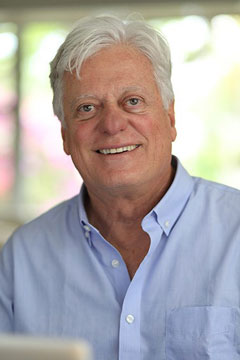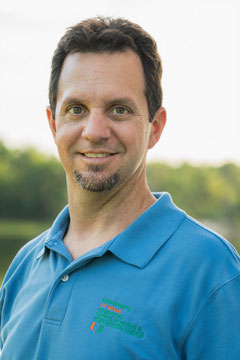A special edition of the Rosenstiel School's series offers a window into its aquaculture program, which collaborates with global businesses to improve the thriving industry.
Aquaculture, also known as the science and business of rearing fish, shellfish, and seaweed for food, has become so prevalent that it now provides more than 55 percent of the seafood for human consumption worldwide. About 90 percent of seafood consumed in the United States is imported, and the vast majority is farmed.
The industry is only projected to increase, as the demand from consumers looking for a healthy protein continues to rise. In Florida, at least 46 fish farms produced close to $4 million worth of fish in 2018, including catfish, tilapia, striped bass, and shrimp, according to the state's Department of Agriculture.

The University of Miami Rosenstiel School of Marine and Atmospheric Science's Aquaculture Program helps support this bourgeoning industry with innovative, sustainable, research-based strategies for growing fish. Professor Daniel Benetti and research assistant Professor John Stieglitz lead the program. They work with graduate and undergraduate students to optimize all stages of the fish production cycle—from eggs all the way to market-quality seafood. Supported by government grants and through research partnerships with private companies, the program aims to assist in providing wholesome seafood for the world's growing demands, while maximizing coastal resiliency.
"We need to be able to feed 9 billion people by 2050, which is a daunting task, but it's one that we have taken," said Benetti, who is also director of the Aquaculture Program.
Benetti and Stieglitz will detail some of the innovations that the Rosenstiel Aquaculture program is making to support this rapidly growing field during a special edition Sea Secrets lecture on Tuesday, October 6, from 6 to 7 p.m.
Benetti came to Rosenstiel as a Ph.D. candidate in 1987 and studied under one of the world's aquaculture pioneers, E.S. Iversen. The professor started the experimental hatchery and aquaculture program at Rosenstiel in the late 1960s as a cooperative initiative to cultivate shrimp and pompano.

Today, the Aquaculture Program focuses on the most ecologically and economically important fish species, including cobia, mahi-mahi, red and yellowtail snapper, grouper, hogfish, flounder, goggle eye, pompano, and tuna. During the past two decades, the program has produced more than 150 graduates, almost all of whom are working across the globe to improve aquaculture technologies, at places like Open Blue Sea Farms, a large-scale cobia hatchery and grow-out offshore operation off the coast of Panama, as well as at Atlantic Sapphire, one of the largest land-based salmon farms in the world that was recently built in Homestead.
As demand for healthy, sustainably raised fish increases, the aquaculture industry must step up, Benetti said, and offer a projected additional 30 metric tons of fish in the next 30 years. He noted that it will require a combination of sustainable aquaculture, well-managed fisheries, as well as stock enhancement of natural fish populations—or growing fish in captivity and then releasing them back into the oceans—to replenish diminishing fishing stocks.
However, maintaining a small carbon footprint while producing large volumes of fish is a tall order, according to Benetti.
"The greatest challenge in aquaculture is to simultaneously achieve environmental sustainability, ecological efficiency, and economic feasibility, while also continuing to alleviate the pressure on wild fish stock populations," he explained.
Benetti and Stieglitz will delve into some the program's most recent projects next week. To register for the Oct. 6 lecture, click here.
A second fall Sea Secrets lecture is planned for November 10, when Robin E. Bell, the Palisades Geophysical Institute Lamont research professor at the Lamont-Doherty Earth Observatory at Columbia University will lead a the virtual lecture "From Panic to Solutions: Climate, COVID-19, and Racism."
During the past 20 years at the institute, Bell has coordinated more than 10 major aero-geophysical expeditions to Antarctica and Greenland to study polar science. Her research can help us to understand how the ice will change in the future and how our coastlines may change as a result. Throughout her expeditions, Bell has uncovered what causes ice sheets to collapse and has mapped terrain beneath the frost—such as a volcano underneath the West Antarctic ice sheet and several large lakes beneath two miles of ice.
To register for the Nov. 10 lecture, click here.
These two fall lectures are considered special edition Sea Secrets because typically the lecture series runs from January to April. A full schedule of Sea Secrets lectures for the spring will be announced toward the end of 2020.






